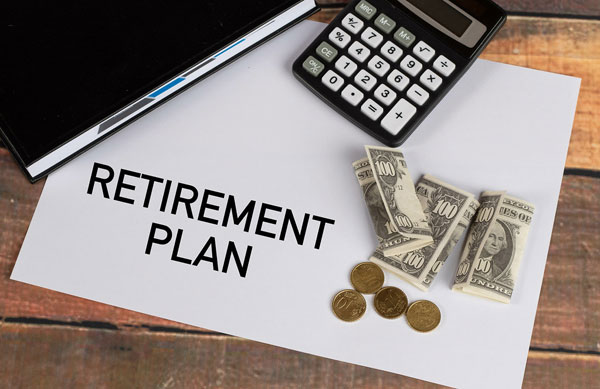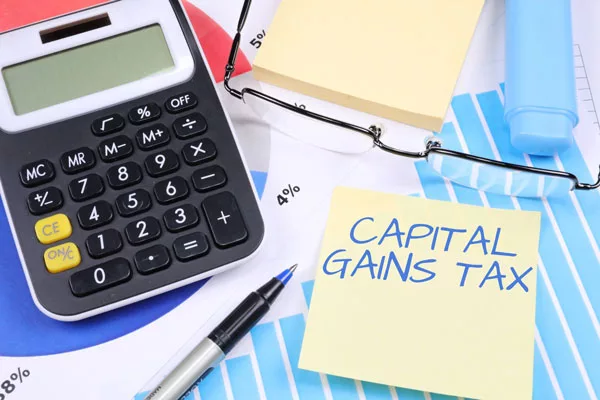Retirement Preparation: Your Friendly Guide to a Secure and Enjoyable Future
Retirement preparation can feel like trying to solve a Rubik’s Cube blindfolded while someone whispers, “Don’t mess this up, your entire future depends on it.” No pressure, right? The truth is, most of us were never really taught how retirement preparation works—we just sort of pick up scary headlines and half-finished conversations about 401(k)s along the way.
The good news? Preparing for retirement doesn’t have to be confusing, and it definitely doesn’t have to be boring. With a clear plan, a few smart habits, and a willingness to start where you are (not where you wish you were), you can build a future that feels secure and enjoyable.
Take a breath. You don’t have to fix everything today. You just have to keep reading.
Why Retirement Preparation Matters
Let’s start with the big question you might be secretly thinking: Do I really need to plan this far ahead?
Short answer: yes.
Imagine you’re heading out on a long road trip. You wouldn’t just jump in the car, ignore the gas gauge, and say, “Eh, I’ll figure it out on the way.” (Okay, some people would. But they also end up on the side of the highway.)
That’s what retirement without retirement preparation looks like. You might get somewhere, but probably not where you wanted—and the journey will be a lot more stressful than it has to be.
Good retirement preparation gives you:
- A rough idea of how much money you’ll need.
- A plan for where that money will come from.
- A way to handle health care and surprise expenses.
- The confidence that you’re not just winging the most important financial phase of your life.
According to a 2023 study by the Employee Benefit Research Institute (EBRI), nearly 40% of Americans feel “not at all confident” about having enough money to retire comfortably. That’s not a small number—that’s a lot of people lying awake running mental spreadsheets in their heads.
What I’ve seen over and over is this: people don’t feel better about retirement because they magically get rich. They feel better because they have a plan. Real retirement preparation turns “I have no idea what I’m doing” into “Okay, I don’t have everything solved, but I know my next step.” That shift is huge.
Setting Your Retirement Goals: Dream Big, Plan Smart
Before we talk numbers, let’s talk life. Because retirement isn’t just a math problem—it’s about how you want to spend your time when your schedule isn’t ruled by meetings, deadlines, and traffic.
So ask yourself: What does a good retirement actually look like for me?
Not for your neighbor, not for your parents, not for some financial guru on YouTube. For you.
Do you picture:
- Slow mornings with coffee and a book?
- Traveling a couple of times a year (or a lot)?
- Spoiling grandkids?
- Working part-time doing something fun but low-stress?
- Staying in your current home or moving somewhere sunnier, quieter, or closer to family?
Here’s a simple framework I love for retirement preparation. Grab a notebook or notes app and divide it into three columns:
- Must-haves: Non-negotiables. These might be things like staying near family, being able to cover health costs without constant stress, or having enough to maintain a comfortable home.
- Nice-to-haves: Things that would be amazing, but could be dialed up or down. Maybe that’s yearly international travel, a cabin, season tickets, or a certain level of giving.
- No-nos: Things you really want to avoid. For a lot of people, that includes going back into high-interest debt, having to move in with kids out of financial necessity, or feeling like every purchase in retirement is an emergency meeting.
Once you’ve done this, your retirement stops being an abstract idea and starts looking like an actual lifestyle you can aim for. That’s the heart of retirement preparation—designing a future that fits who you are.
And here’s something many people don’t realize: your retirement age and target retirement date are much more flexible than they sound.
- Maybe you retire fully at 65.
- Maybe you shift to part-time at 62 and fully retire at 68.
- Maybe you switch to a lower-stress job you actually enjoy and work a bit longer.
Those choices can drastically change the math by giving you more years to save and fewer years to fund entirely from your savings.
Online retirement calculators are really helpful at this stage. They’re not crystal balls, but they do give you ballpark numbers: “If you save X until age Y, here’s roughly what that might look like.” I like them because they turn vague worry into something you can adjust.
Building Your Retirement Savings: The Foundation of Your Plan

Now let’s talk about the engine behind your future: retirement savings.
If you’ve ever thought, “I’m behind, so what’s the point?”—you’re not alone. I’ve heard that from people at 30, 40, 55, even 60. The truth is, retirement preparation is less about perfection and more about consistency. You’re almost always better off doing something than doing nothing.
The main tools for building retirement savings are tax-advantaged accounts like:
- 401(k) or 403(b): Offered by many employers. You can contribute directly from your paycheck.
- Traditional IRA: Often tax-deductible now, taxed when you withdraw later.
- Roth IRA: Contributions are taxed now, but qualified withdrawals in retirement are tax-free.
A common rule of thumb is to aim to save around 15% of your pre-tax income for retirement, including any employer match. That’s a great goal—but it’s not a dealbreaker if you’re not there yet.
If you’re at 3% right now, move to 4% or 5%. Then bump it again next year. I’ve seen people quietly ratchet up their contributions a percent or two at a time and, years later, they’re amazed at the difference it made.
And if your employer offers a match? Please treat that like mandatory reading. Walking away from a 401(k) match is like leaving part of your paycheck on the table and saying, “Nah, I’m good.” Matching contributions are one of the easiest wins in retirement preparation.
Maximizing contributions to these tax-advantaged accounts is powerful because:
- Your money grows tax-deferred or tax-free.
- You benefit from compound growth—your earnings start earning.
- You’re building a dedicated bucket just for retirement, not a general “maybe someday” fund.
Catch-Up Contributions: Your Late-Game Superpower
If you’re 50 or older and feeling like you started late, take a deep breath—you actually have a unique advantage.
The IRS allows catch-up contributions in many retirement accounts once you hit age 50. That means you’re allowed to put in more than younger workers. For example, in 2025, you can contribute up to $23,500 to a 401(k), plus an additional $7,500 if you’re 50 or older (subject to IRS updates). New rules even allow people ages 60–63 to make larger catch-up contributions in some plans.
I’ve seen folks in their 50s and early 60s use catch-up contributions, cut a few non-essential expenses, and make serious progress in a surprisingly short window. Is it always easy? No. Is it often worth it? Absolutely.
Automate Your Savings So You Don’t Have to Rely on Willpower
One of the most underrated retirement preparation tools: automation.
Set up automatic contributions from your paycheck or bank account into your retirement accounts. When saving happens by default, you’re not asking yourself every month, “Should I save or should I buy that thing?” The decision is already made.
I like to think of this as putting retirement preparation on autopilot. You still steer the plane, but you’re not manually flying every second.
Smart Investing: Balancing Growth and Risk
Okay, so the money is going into your retirement accounts. Now the big question: What do you actually invest in?
This is where asset allocation comes in—how you split your investments among different types of assets like stocks, bonds, and funds.
Here’s the basic breakdown of investment accounts:
- Stocks: Higher potential growth, bigger ups and downs.
- Bonds: More stability, generally lower returns.
- Mutual funds / index funds / ETFs: Bundles of many stocks or bonds that give you instant diversification.
In retirement preparation, the goal is to balance growth and safety over time. Younger investors usually lean more heavily into stocks—time is on their side, so they can ride out the scary years. People closer to retirement often shift toward more bonds and conservative investments to protect what they’ve built.
Diversification and Rebalancing: Quiet but Powerful
A key part of smart retirement and financial future preparation is diversification—spreading your investments around so you’re not overly dependent on any one company, industry, or trend.
You don’t want your entire retirement plan tied to a single stock just because someone at a barbecue swore it was a “sure thing.” (Spoiler: there are no sure things.)
Over time, some parts of your portfolio will grow faster than others. If you never touch it, your risk level can drift far from what you originally chose. That’s where rebalancing comes in.
Rebalancing (often once a year) means:
- Selling a bit of what’s grown beyond your target percentage.
- Adding to what’s fallen below your target.
It feels a little backwards—you’re trimming the “winners” and adding to the “laggards”—but over the long term, it helps keep your risk in line with your plan.
Research from firms like Vanguard has shown that asset allocation and consistent rebalancing are major drivers of long-term portfolio outcomes. In plain English: getting the mix right matters more than finding the perfect stock. That’s comforting if you’re not looking to moonlight as a full-time stock picker.
Planning for Retirement Income: Making Your Savings Work for You
You spend years (or decades) putting money into your accounts. Then one day, the script flips and you’re supposed to start taking it out. That shift from saver to spender is one of the weirdest mental transitions in all of retirement preparation.
It’s normal to worry: What if I take out too much? What if I don’t take out enough and never enjoy what I saved?
A common starting point is the 4% rule. It suggests that, historically, withdrawing about 4% of your nest egg in the first year of retirement—and then adjusting that dollar amount for inflation—would often make your money last around 30 years.
But it’s not a magic formula.
Your ideal withdrawal rate depends on:
- Your total savings and investments.
- Your retirement age and how long you might need income.
- Other income sources like Social Security, pensions, or rental properties.
- Your health, lifestyle, and flexibility.
This is where personalized retirement preparation becomes crucial. Some people are comfortable with a lower withdrawal rate for extra safety. Others have a big pension and can afford a different approach. If the idea of “guessing” stresses you out, this is a perfect topic to bring to a financial planner.
Layering Your Income Sources
Retirement income rarely comes from just one place. You might have:
- Social Security benefits.
- A pension.
- Investment withdrawals.
- Part-time or freelance work.
- Rental income.
A smart retirement preparation strategy often aims to cover basic, non-negotiable expenses—housing, groceries, utilities, basic health care—with more predictable sources like Social Security and pensions. Then your investment withdrawals can cover everything else: travel, hobbies, extras.
Timing your Social Security benefits is a huge part of this puzzle. Claiming early gives you income sooner but locks in a smaller check for life. Waiting until your full retirement age (typically 66–67) or even delaying to age 70 increases your monthly benefit significantly.
There’s no one right answer for everyone, but there is a right answer for you—and it’s worth running the numbers.
Navigating Health Care Costs: A Critical Piece of Retirement Preparation
If retirement planning had a “most avoided topic,” health care would probably win by a landslide. It’s complicated, the numbers in health insurance can be big, and no one enjoys thinking about getting older or needing care.
But ignoring the need for health insurance doesn’t make it cheaper.
Fidelity has estimated that a typical 65-year-old couple may need a substantial six-figure amount over the course of retirement just for health care. That includes premiums, deductibles, copays, and other out-of-pocket costs—not even long-term care.
So, let’s break this down into manageable pieces.
Medicare: Helpful but Not All-Inclusive
In the U.S., Medicare usually starts at age 65. It’s incredibly valuable, but it’s not “free health care for the rest of your life.”
You’ll still have:
- Monthly premiums.
- Deductibles and copayments.
- Prescription costs.
That’s why many people pair Medicare with either:
- Medigap (Medicare Supplement) policies, or
- Medicare Advantage plans.
These help cover some of the costs Original Medicare doesn’t fully pay for.
The tricky part? Enrollment windows are strict:
- You typically have a 7-month window around your 65th birthday to sign up for Medicare without penalties.
- For Medigap, there’s usually a 6-month window when you’re 65 and enrolled in Part B where you can get coverage more easily. Miss it, and you might face higher costs or limited options.
Good retirement preparation means marking these dates on your calendar early. Think of them as non-negotiable appointments with future you.

HSAs and Pre-65 Coverage
If you’re still working and covered by a high-deductible health plan, a Health Savings Account (HSA) can be a quiet hero in your retirement preparation.
Here’s why HSAs are so powerful:
- Contributions are tax-deductible (or pre-tax via payroll).
- Growth is tax-free.
- Withdrawals for qualified medical expenses are tax-free.
Later, you can use HSA funds to help pay for Medicare premiums and other health costs. That’s like having a mini medical war chest built into your plan.
If you plan to retire before 65, you also need a plan to bridge the gap before Medicare kicks in. That might mean:
- Staying on an employer retiree plan if you have one.
- Using COBRA for up to 18 months.
- Buying private coverage or using your national or state marketplace.
These costs can be significant, so building them into your retirement preparation (instead of pretending they won’t exist) can help you avoid unpleasant surprises.
Long-Term Care: The “What If?” Box
Long-term care is the part of retirement preparation many people mentally shove into a box labeled “Later.” I get it. But it matters.
About 60% of people will need some kind of long-term care—anything from in-home assistance to nursing home care—at some point. Medicare doesn’t typically cover extended long-term care.
Your options might include:
- Long-term care insurance.
- Hybrid life insurance policies with long-term care riders.
- Setting aside specific savings or home equity for potential care.
The U.S. Department of Health and Human Services notes that a private room in a nursing home can cost over $100,000 per year in many areas. You may never need that level of care—but your retirement preparation is stronger if you’ve at least thought about how you’d handle it if you did.
Managing Debt and Expenses: Lighten Your Financial Load
Carrying a lot of debt into retirement is like trying to relax on vacation while your phone buzzes every five minutes with payment reminders. Technically, you can do it, but it doesn’t feel very peaceful.
Part of realistic retirement preparation is cleaning up your financial life as much as you reasonably can before you stop working.
That often means:
- Paying down high-interest credit card debt.
- Reducing personal loans.
- Being cautious about taking on new large debts close to retirement.
Many people also aim to pay off their mortgage before retiring. That’s not always possible, but going into retirement without a house payment can dramatically lower your monthly expenses and give you more breathing room.
Get Honest About Where Your Money Goes
It’s really hard to plan for the future if you’re not sure what’s happening in the present.
A practical and key step in financial decision making is tracking your spending for a month or two. Not to punish yourself or chase perfection—just to see the truth.
You might discover:
- Subscriptions you forgot about.
- Categories where you’re spending way more than you thought.
- Easy places to cut back that don’t actually make your life worse.
The goal is not to strip all the joy out of your budget. It’s to make sure your money is doing what you actually want it to do—and that includes a secure retirement.
Once you have a good sense of your current spending, you can sketch out a retirement budget: what might go away (commuting costs, certain debts), what might go up (health care, travel), and what you want to keep.
Suddenly, “Will I have enough?” becomes “What do I need to adjust so I will have enough?” That’s a much more powerful question.
Social Security Benefits: Timing Is Everything
For a lot of people, Social Security isn’t just a bonus—it’s a core piece of retirement income. That makes it an essential part of smart retirement preparation.
Here’s the basic tradeoff:
- You can claim benefits as early as age 62.
- Your full retirement age (FRA) is usually between 66 and 67, depending on your birth year.
- You can delay claiming up to age 70.
If you claim early (say, at 62), your monthly benefit is permanently reduced compared to waiting until FRA. If you delay past FRA, your benefit increases by about 8% per year you wait, up until age 70.
There’s no one-size-fits-all rule here. The best choice depends on your health, life expectancy, other income, and whether you’re married.
If you’re married, timing gets even more interesting—there are spousal benefits and survivor benefits to consider. Coordinating when each spouse claims can make a big difference in your long-term household income.
One small perk in the middle of all this: if you’re already receiving Social Security when you turn 65, you’re usually automatically enrolled in Medicare Parts A and B. One less form in a world full of forms is a win in my book.
The Social Security Administration has calculators and tools that let you test different claiming ages and see how they affect your benefits. Spending a bit of time with those tools—or talking through them with a professional—can be a very smart part of your retirement preparation.
Creating a Retirement Plan: Your Roadmap to Success
At this point, you might be thinking, “Wow, there are a lot of moving parts.” And you’re right. That’s exactly why having an actual retirement plan matters.
Think of your plan as a living roadmap, not a rigid contract. Retirement preparation is an ongoing process—not a one-time assignment you turn in and forget.
A solid retirement plan pulls together:
- Your target retirement age (or a range).
- Your expected expenses and lifestyle.
- Your savings and investment strategy.
- Your plan for health care and long-term care.
- Your approach to Social Security and any pensions.
You don’t have to know everything today. But writing down what you do know—and updating it as life changes—helps you avoid drifting.
Check in on your retirement plan at least once a year and ask:
- Am I saving what I meant to—or can I nudge it up?
- Does my investment mix still fit my age and risk comfort?
- Have my goals, family situation, or health changed in a way that affects the plan?
When It’s Worth Getting Professional Help
You’re not expected to become a full-time retirement expert on top of everything else you already do.
A good financial advisor or tax professional can help you:
- Fine-tune your investments.
- Decide whether Roth conversions make sense.
- Build a tax-efficient withdrawal strategy.
- Navigate pensions, stock options, or service credit purchases.
I’ve seen people walk into a planning session feeling overwhelmed and walk out saying, “Okay, I finally get what I need to do next.” That clarity alone can be worth it.
Think of professional advice as another tool in your retirement preparation toolkit—not a sign that you’ve failed at doing it yourself.
Wrapping Up: Preparing for Retirement Is a Journey, Not a Sprint
If you’ve made it this far, take a second and give yourself some credit. Most people never spend this much time thinking intentionally about retirement preparation, and you just did.
Here’s the most important thing I want you to remember: you don’t need a perfect past to build a better future. You might feel behind, or confused, or unsure if you’re doing it “right.” That’s okay. You start from where you are, not where you wish you had started.
Retirement preparation is really about creating options. Options to slow down. To spend time with people you love. To say yes to things you want and no to things you don’t. To wake up in the morning and not have your first thought be, “Am I going to be okay?”
So what now?
- Maybe you increase a retirement contribution by 1%.
- Maybe you write down your must-haves and nice-to-haves.
- Maybe you finally open that retirement calculator.
- Maybe you book a meeting with a financial advisor and bring all your messy questions.
You don’t have to fix everything today. You just have to take one step. Then another.
With thoughtful, ongoing retirement preparation, you’re not just hoping your future turns out okay—you’re actively building a future you’ll be excited to live in.







